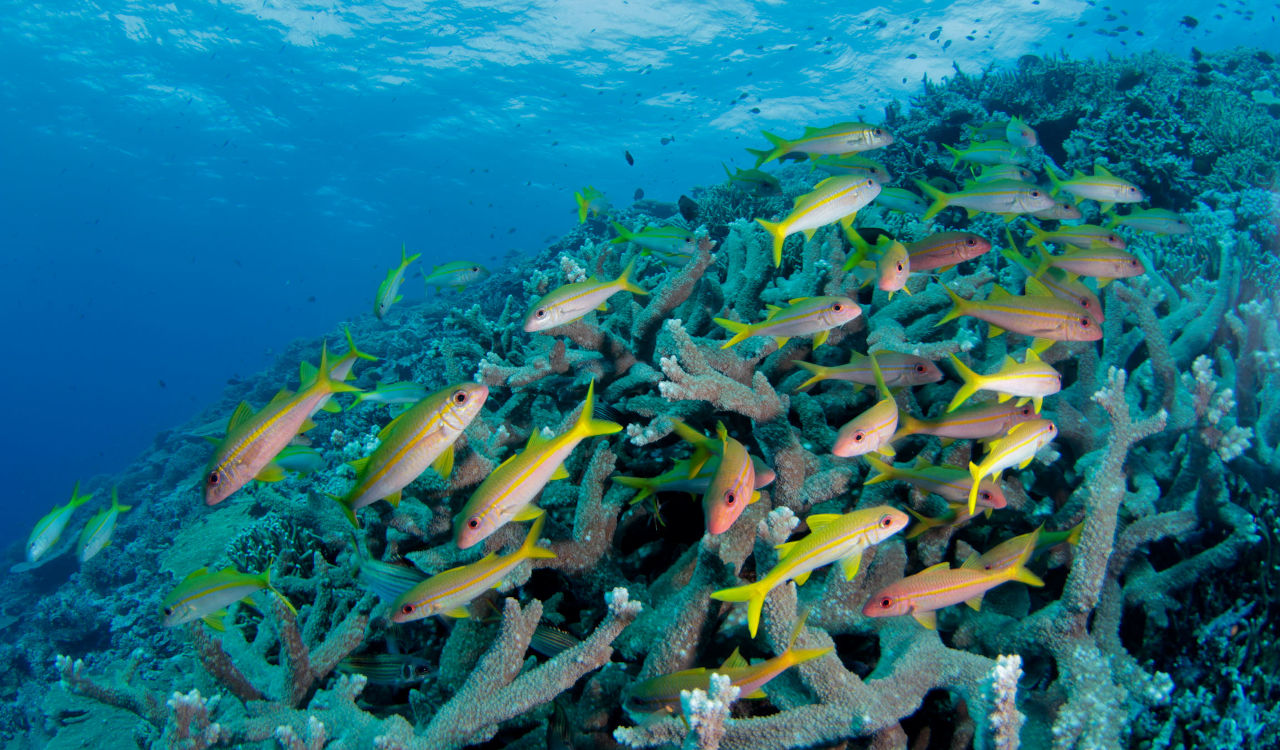Protecting the sea, feeding people
How can we reconcile the imperative need to protect coral reefs without penalizing the many human populations that depend on marine resources for their livelihoods? According to a study conducted by researchers from UM, IRD, CNRS, and the University of New Caledonia and published in Science on April 17, placing certain reefs under "partial" protection combined with good fisheries management could be an interesting compromise.

Since the 1980s, around 2,000 marine protected areas (MPAs) have been established to preserve coral reefs from the pressure exerted by human activities, particularly overfishing. There are several levels of protection, ranging from "no-take" or integral MPAs, which prohibit all harvesting, to "partial" MPAs, where fishing activities are only restricted. Although they currently cover only 6% of the world's coral reefs, the UN plans to increase the number of MPAs fivefold by 2030. This is essential when we consider that they are home to 6,000 species of fish and account for 70% of known marine biodiversity.
State of coral reefs
Researchers from an international consortium bringing together American, Canadian, Australian, British, and French laboratories have therefore focused on this sustainable development objective. Among them are specialists from the CNRS,IRD,University of New Caledonia, and University of Montpellier, along with the Marbec laboratory (marine biodiversity, exploitation, and conservation). The aim of this study? To assess the current state of coral reefs and simulate their protection in order to determine where to place these MPAs so that they are both effective in protecting biodiversity and compatible with the survival of the many human populations for whom the sea is a source of food and income.
Researchers studied fish populations living on 1,800 coral reefs (including 106 in MPAs) in the Caribbean Sea, the Indian Ocean, and the Pacific Ocean, located at varying distances from the coast. Three conditions essential to maintaining biodiversity and serving humans were identified: maintaining a significant biomass of commercial species such as grouper, conserving herbivory pressure, in other words the presence of species such as parrotfish which, by eating the algae that grow on corals, promote their growth. Finally, the presence of species that perform different ecological functions (functional diversity) and thus contribute to the resistance and resilience of coral ecosystems.
Effective MPAs far from humans
First observation: only 5% of the reefs observed show good results for the three reference conditions."These are located more than 1,000 kilometers from the coast,"explains David Mouillot, a researcher at the Marbec laboratory. "They are still in good condition and represent the last refuges for many marine species, particularly large predators such as sharks, swordfish, and tuna"(see article "Too Close to Humans," LUM magazine No. 8). For Laurent Vigliola, a researcher at IRD and co-author of the study, "It is imperative that we protect these very rare isolated reefs. This is the case with the Coral Sea Natural Park, which has placed all the isolated reefs off the coast of New Caledonia under full MPA protection."
The second conclusion of this study is that marine protected areas are ineffective on reefs that have been subjected to excessive human pressure due to their proximity. "These reefs are in very poor condition, and the creation of marine protected areas brings only marginal benefits,"notes David Mouilllot. "When anthropogenic pressure is too high in the surrounding area, even complete sanctuarization is not enough. We must therefore revise our objectives downward in these areas."
A possible compromise
On a more positive note, half of the sites studied and currently located outside MPAs could benefit from real improvement through protection. "These are reefs located 5 or 6 hours' sail from the coast. They are affected by human activity, but their degradation is reversible. It is in these areas that we really need to fight,"says David Mouillot. While total protection would obviously be desirable, the need to take into account societal issues, particularly food security in many countries experiencing economic difficulties, points towards partial protection which, combined with good fisheries management, could pave the way for a genuine balance between humans and marine biodiversity.